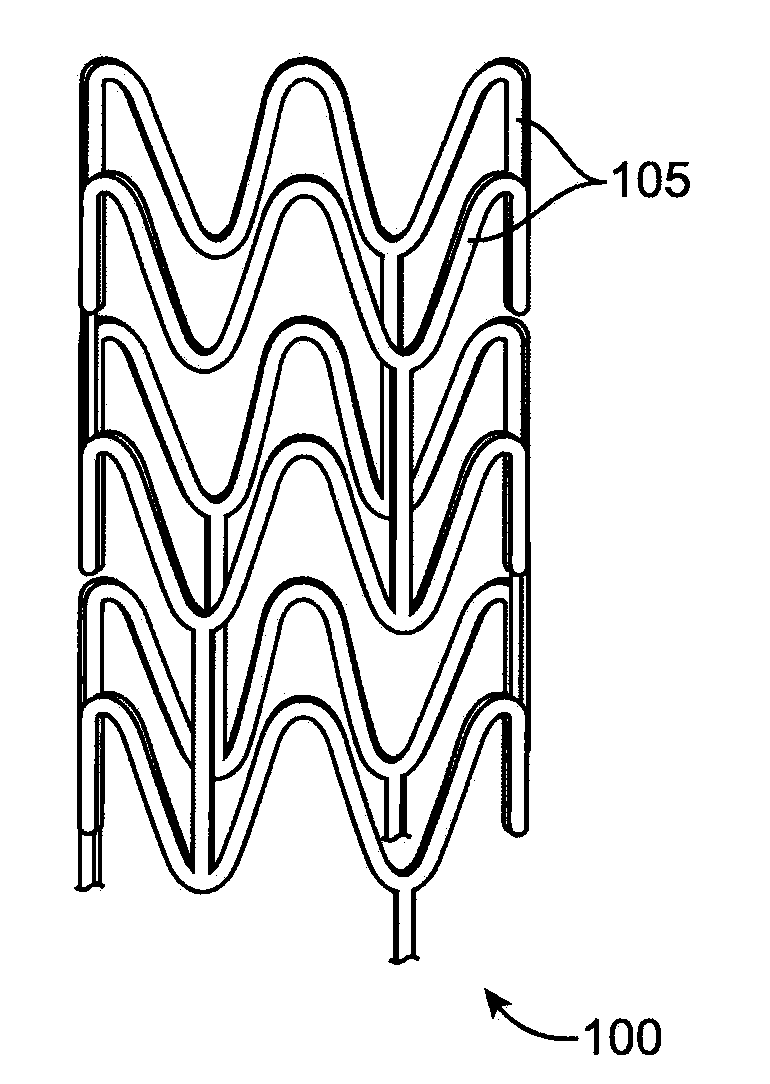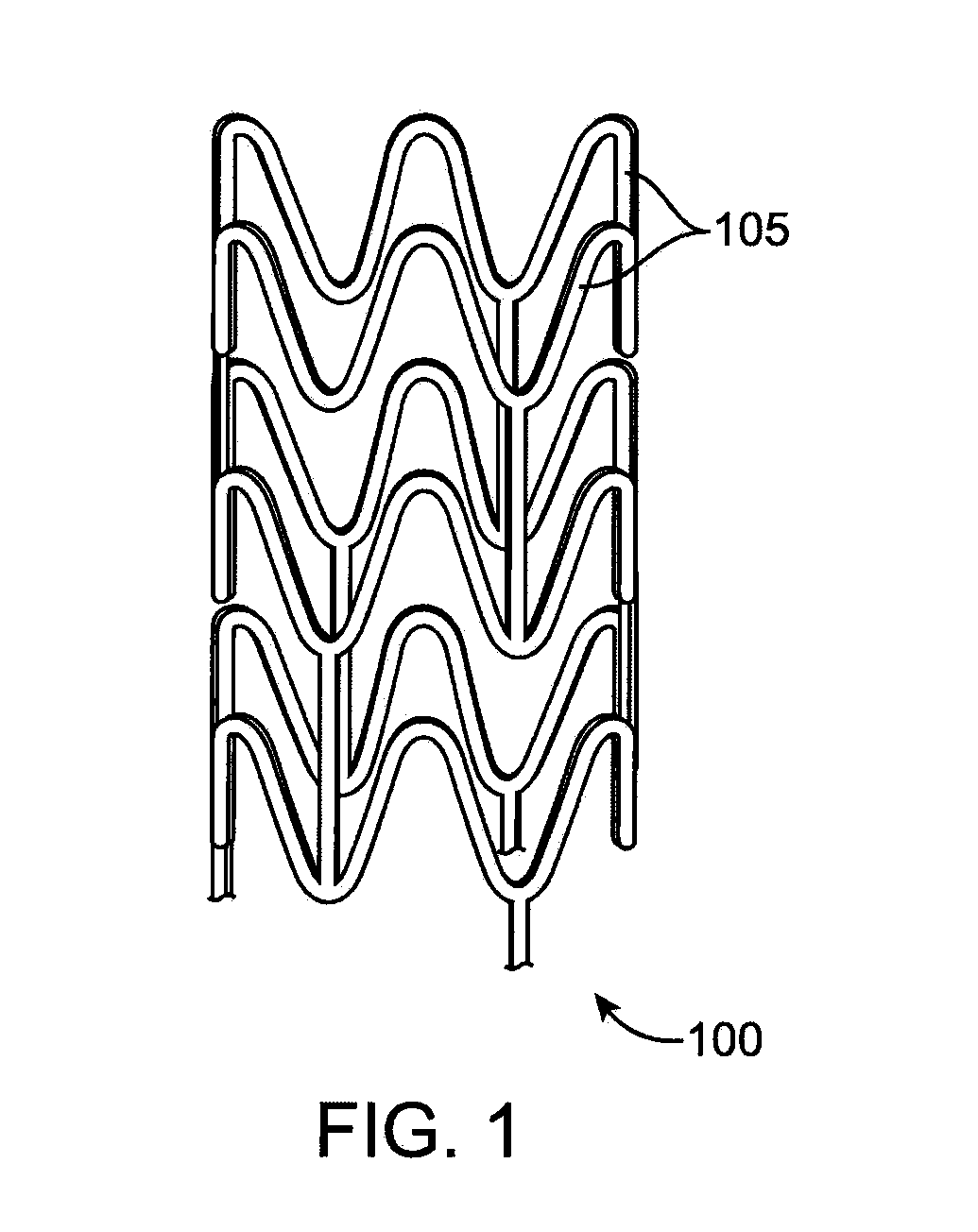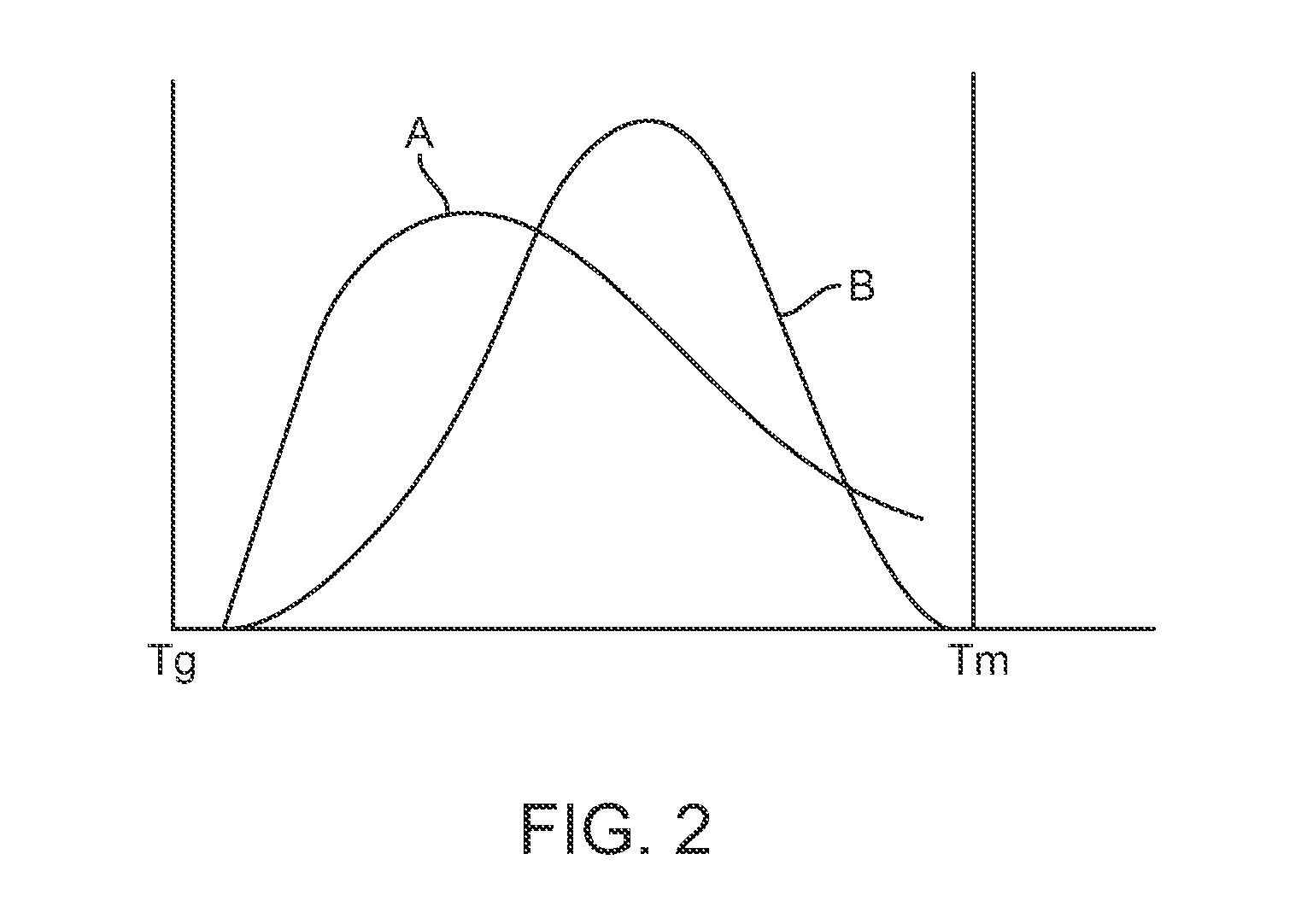Medical Device Fabrication Process Including Strain Induced Crystallization With Enhanced Crystallization
- Summary
- Abstract
- Description
- Claims
- Application Information
AI Technical Summary
Benefits of technology
Problems solved by technology
Method used
Image
Examples
Embodiment Construction
[0028]Various embodiments of the present invention relate to manufacture of polymeric implantable medical devices. In particular, the embodiments include methods of making an implantable medical device from a polymer construct that includes subjecting the construct to an annealing step which include annealing or aging the construct at an elevated temperature below the glass transition temperature (Tg) of a polymer of the construct followed by a deformation step in which the annealed polymer construct is deformed. The Tg refers to the glass transition temperature of the semi-crystalline polymer prior to the annealing step. The deformation step results in strain-induced crystallization in the construct. The annealing step provides several advantages including one or more of the following: higher crystallinity, higher density of smaller crystallites, faster crystallization kinetics, reduced physical aging, and improved mechanical properties, for example, higher modulus, and higher toug...
PUM
| Property | Measurement | Unit |
|---|---|---|
| Temperature | aaaaa | aaaaa |
| Temperature | aaaaa | aaaaa |
| Temperature | aaaaa | aaaaa |
Abstract
Description
Claims
Application Information
 Login to View More
Login to View More - R&D
- Intellectual Property
- Life Sciences
- Materials
- Tech Scout
- Unparalleled Data Quality
- Higher Quality Content
- 60% Fewer Hallucinations
Browse by: Latest US Patents, China's latest patents, Technical Efficacy Thesaurus, Application Domain, Technology Topic, Popular Technical Reports.
© 2025 PatSnap. All rights reserved.Legal|Privacy policy|Modern Slavery Act Transparency Statement|Sitemap|About US| Contact US: help@patsnap.com



